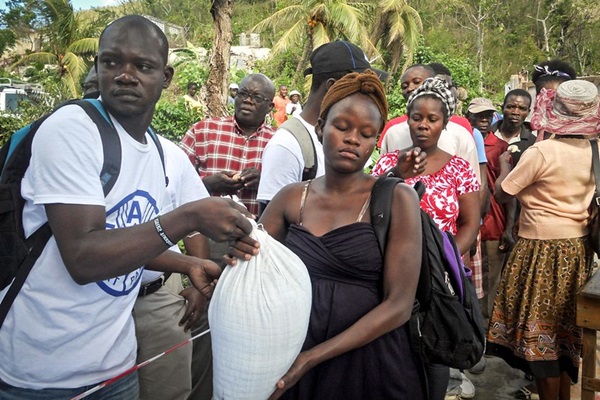
Port-au-Prince/Santiago de Chile – According to the latest Integrated Food Security Phase Classification (IPC) analysis (March 2023), 4.9 million people in Haiti - nearly half of the country's population - are experiencing high levels of acute food insecurity. This figure represents an increase of 200 000 people in just five months. And of the total number of people affected, 1.8 million are in Emergency (IPC Phase 4) – up from the analyses in the last three years. This means that households face large food consumption gaps resulting in high acute malnutrition and excess mortality, or are forced to adopt negative coping mechanisms to cover food needs, such as selling their productive assets or consuming seeds instead of planting them, increasing their vulnerability.
With 75 percent of Haiti's population living in rural areas, urgent measures are needed to save lives and quickly restore the agricultural livelihoods of vulnerable farmers. For example, investing USD 125 in a market-gardening seed package can generate 20 times its value in the production vegetables, enabling families to have access to food and generate income through the sale of part of the product obtained.
Under the 2023 Humanitarian Response Plan, the Food and Agriculture Organization of the United Nations (FAO) is appealing for $61.7 million to assist 700 000 people to improve their access to food. Activities will focus on the provision of agricultural inputs (seeds and fertilizer) to increase staple food and vegetable production (2023 spring and winter seasons) as well as to protect livestock assets, through the provision of poultry and goats, as well as vaccines and veterinary treatment.
Structural causes
Haiti is experiencing a prolonged crisis that has become more acute and complex than ever before. The socio-economic effects of the COVID-19 pandemic are compounded by the war in Ukraine, the cholera outbreak and the impact of extreme events such as hurricanes, floods and earthquakes.
Households' purchasing power continues to be affected by high food prices, linked to the depreciation of the local currency against the US dollar, and the rising cost of transportation.
Along with crop failures, this has forced people to increasingly resort to negative coping mechanisms to meet their basic needs.
Violence by gangs and armed groups threatens the security of communities and continues to hinder their access to agricultural inputs and food.
Moreover, Haiti is one of the countries most vulnerable to natural disasters that have caused extensive damage and loss of life. Many communities are still struggling to recover from disasters such as Tropical Storm Grace and the 2021 earthquake, which devastated parts of Grand'Anse, Nippes and Sud departments.